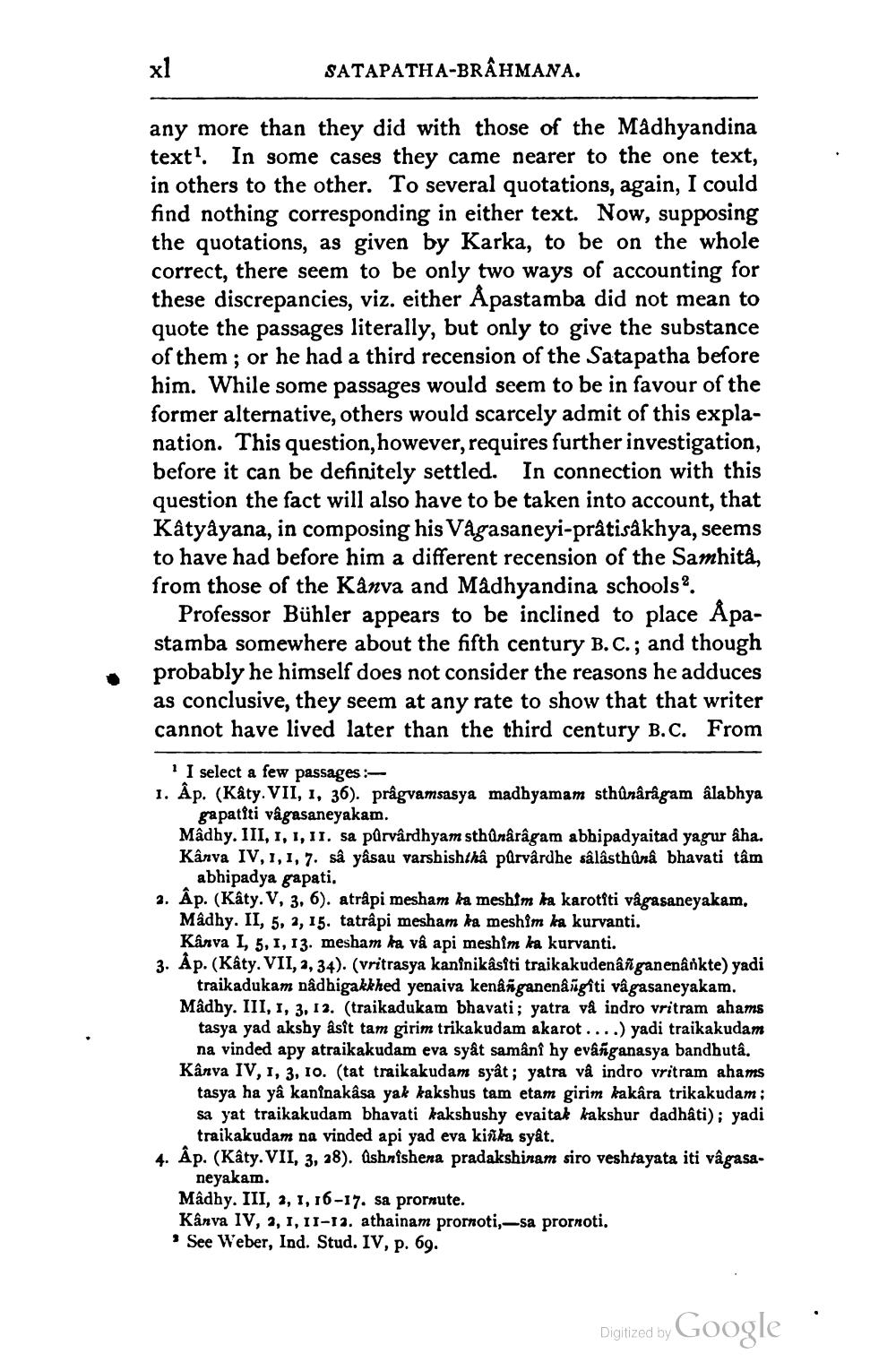________________
SATAPATHA-BRÂHMANA.
any more than they did with those of the Mâdhyandina text? In some cases they came nearer to the one text, in others to the other. To several quotations, again, I could find nothing corresponding in either text. Now, supposing the quotations, as given by Karka, to be on the whole correct, there seem to be only two ways of accounting for these discrepancies, viz. either Apastamba did not mean to quote the passages literally, but only to give the substance of them; or he had a third recension of the Satapatha before him. While some passages would seem to be in favour of the former alternative, others would scarcely admit of this explanation. This question, however, requires further investigation, before it can be definitely settled. In connection with this question the fact will also have to be taken into account, that Kâtyâyana, in composing his Vagasaneyi-prâtisakhya, seems to have had before him a different recension of the Samhità, from those of the Kanva and Madhyandina schools.
Professor Bühler appears to be inclined to place Apastamba somewhere about the fifth century B.C.; and though probably he himself does not consider the reasons he adduces as conclusive, they seem at any rate to show that that writer cannot have lived later than the third century B.C. From
1 I select a few passages - 1. Âp. (Kåty. VII, 1, 36). prâgvamsasya madhyamam sthûnârâgam alabhya
gapatfti vagasaneyakam. Mâdhy. III, 1, 1, 11. sa parvardhyam sth Unârâgam abhipadyaitad yagur áha. Kânva IV, 1, 1, 7. sa yâsau varshishthâ purvârdhe sâlâsthûna bhavati tâm
abhipadya gapati. 2. Âp. (Kâty. V, 3, 6). atrápi mesham ka meshim ka karotiti vågasaneyakam.
Madhy. II, 5, 2, 15. tatrâpi mesham ka meshim ka kurvanti.
Kanva I, 5, 1, 13. mesham ka vå api meshim ka kurvanti. 3. Åp. (Kâty. VII, 2, 34). (vritrasya kaninikâsiti traikakudenâñganenâökte) yadi
traikadukam nâdhigakkhed yenaiva kenanganenâīgiti vâgasaneyakam. Mâdhy. III, 1, 3, 12. (traikadukam bhavati; yatra vå indro vritram ahams
tasya yad akshy asit tam girim trikakudam akarot....) yadi traikakudam
na vinded apy atraikakudam eva syåt samânî hy evanganasya bandhutâ. Kânva IV, 1, 3, 10. (tat traikakudam syât; yatra và indro vritram ahams
tasya ha ya kaninakâsa yak kakshus tam etam girim kakâra trikakudam; sa yat traikakudam bhavati kakshushy evaitak kakshur dadhâti); yadi
traikakudam na vinded api yad eva kiska syât. 4. Ap. (Kâty. VII, 3, 28). ashrishena pradakshinam siro veshtayata iti vâgasa
neyakam. Madhy. III, 2, 1, 16-17. sa prornute. Kânva IV, 2, 1, 11-13. athainam prornoti,--sa prornoti. * See Weber, Ind. Stud. IV, p. 69.
Digitized by Google




